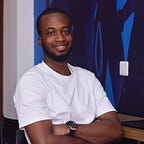Beginners Guide to Hiring Tech Talent in Nigeria
This is the first story in a series on how a product designer set out from just clicking pixels, to managing teams and product visions, and all those other things they say you do in product management.
Story story, late last year I had just finished delivering a superb UX design project for a Client, the excitement was high and everyone was pumped! They could feel the project come to life already and I was eagerly waiting for my december-flexing credit alert!
Fast forward to some months later, I got a phone call from that same client. They wanted to take me on full time as the product manager to deliver and launch the project for them. I knew how to design and how to solve problems, I’ve managed a few designers before, but this was my first time taking on a full development team. To sum it up, I had only read about product management on Twitter and had no experience!
That was a bittersweet moment for me (or sweet-bitter whichever comes first). I had to build a team from the ground up, write long job descriptions, participate in the interviews with HR and choose who is good enough. Close your eyes for a moment, a brief moment and imagine the flood of thoughts I was having at that moment:
Who is a developer in the first place?
How do I sieve these Audio developers from the real ones?
How do I even know what to ask?
How would we work?
How do we bargain the paycheck and what level am I to start with?
And to sum it all up, I had just one month to figure all these out and kickoff development, and trust me when I say I had never felt as incompetent before. As the General Overseer of Procrastinators in Nigeria, I started with wasting one week just looking at my ceiling and thinking about my current situation.
When I finally started with coming up with a job description, I remember calling a dev friend of mine Obinna (name not withheld for security reasons) almost every day asking him a lot of questions. From mundane ones like the difference between a programmer and developer; to highly technical ones like test questions to give backend developers, tech stacks and the ideal frontend:backend team ratio; and also how his first hiring and onboarding process was like, his first offer and initial KPI sets.
After structuring my hiring plan, and deciding on the number of devs I’ll be needing, I then set out to find developers that didn’t call HTML/CSS a programming language (duhh). Considering the time frame (2weeks gone already), I decided against publishing a vacancy on any job board as that would turn to just pure torture for me and the already tired HR staff.
I started with compiling a list of senior developers I know (Obinna still, and others I can’t remember), and reached out to them to refer me to junior developers they knew. The first list I got had 34 names! And I just needed 3! My head was just turning-on-its-own, I had just one week left, my sweet plan couldn’t possibly play out in less than one week, and so I did what I knew best…
We sha kicked off the project in time, how I decided on the final 3 names to work with remains a mystery to everyone (including me 😬) and it’s been one hell of a ride since then!
Some lessons I learnt along the way
- Hiring tech talent takes time. It’s not just about looking for names to fill vacancies but finding individuals that understand your work style and fit the company culture. Getting those 3 vacancies filled up in record time was nothing short of magical, but in an ideal environment, it can take months to fill up a job vacancy.
- Define your goal clearly. Clarity is very important in your job description. Do not go around copying verbatim job descriptions online. It certainly will backfire in the long run.
- Create an onboarding plan. Now that your goals have been defined and a perfect employee has received a confirmation letter, yaay!! Everyone is happy! So what’s next? Creating an onboarding plan is very important especially when dealing with technical staff, minor and major details need to be made clear so that the new hires can hit the ground ASAP and start doing their magic.
- Reach out to a community. You must be asking how I got the new hires? What’s this mystery you do not want to let us know about? Well, the magic was that (drum rolls), I reached out to a tech hub I interned with and asked for their best 3 developers from the last internship cohort. That way I was certain of their expertise and developer level. That cut my searching time in half, so in summary, reach out to an expert community and you’d definitely find a good fit for your roles.
- Inclusive Employment. Whilst I was in search for (the perfect) candidate, I must confess, I was not very inclusive. This is because most of the people in my circle were male developers, of a particular age range, from a particular part of Nigeria. Talent is evenly distributed but opportunity is not; this ideology, I forgot to factor in my hiring process.
The next global rush we’ll have after Gold and Oil would be the Talent. Companies will come after your employees like sharks, and the competitive arena will be hot, so if you’re a hiring manager or any kind of manager, you should brace yourself for impact.
P.S: If you found this read interesting, and did not get pissed off with my clickbait, then hit the follow button below as you keep up with my series “this thing called product management”.
